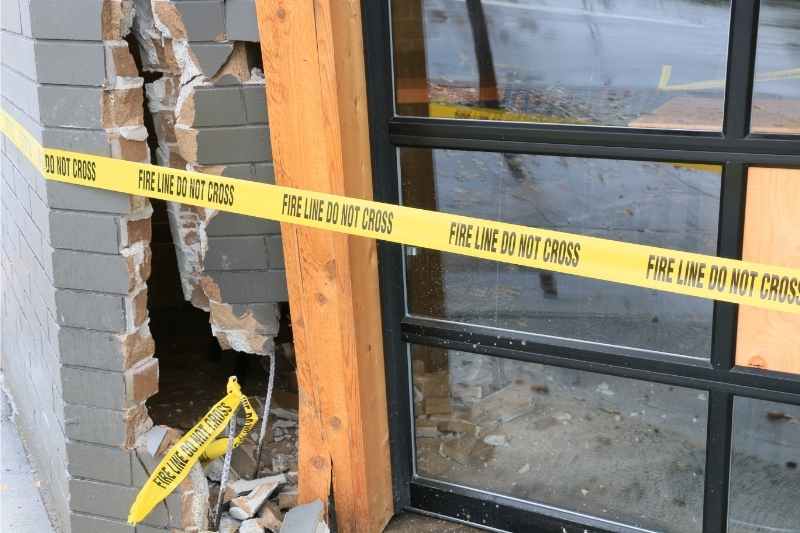
Disclaimer: This content is for informational purposes only, you should not construe any such information as legal, tax, investment, financial, or other advice. Nothing contained on our site constitutes a solicitation, recommendation, endorsement, or offer by ButterflyMX or any third-party service provider. ButterflyMX is not a financial adviser. You should always seek independent legal, financial, taxation, or other advice from a licensed professional.
Real estate risk can seem like the biggest hurdle to property developers and investors. But in reality, it’s no different from determining a development type and choosing a financial strategy. Real estate risk is unavoidable when financing and investing in real estate. However, risk can be minimized and, in many cases, even planned for.
In this post, we’ll cover the real estate risk definition and how it’s calculated. Next, we’ll cover the many different types of risk and how you can both plan for them and survive them.
This post covers:
What is capital risk in real estate?
Capital risk is the possible financial (capital) loss an investor can experience when investing in real estate. Investors stand a chance of losing some or even all of their investment capital. Financial risk is always a possibility when investing in real estate, no matter how confident or experienced an investor is.
Watch how to get started in commercial real estate development:
Is real estate a low risk?
Real estate can be both high and low risk depending on an investor’s decisions. This is one of the major advantages of real estate — investors have some level of control.
However, all real estate investments carry some risk. Many investors assume that the higher the risk, the higher the possible reward. But this isn’t always sound logic.
How is real estate risk calculated?
The most common way to calculate real estate risk is to look at historical property data, which includes the highs and lows of property performance.
The NCREIF (National Council of Real Estate Investment Fiduciaries) keeps data on all types of properties from 1994 onwards. With nearly 20 years of data, you can quickly compare the performance of certain property types. From this, you can determine risks. However, because so many factors contribute to risk, there’s a lot of room for variation with these calculations.

8 types of real estate risk to watch out for
Some real estate risks can be anticipated more than others. Real estate risk management, when developing and investing, is half the battle. The real estate risk analysis list below covers a number of different ways seemingly sound investments can go sideways.
Real estate risks include:
- The real estate market
- Rental income
- Property damage
- Locational risk
- Construction delays
- Depreciation
- Tax changes
- Liquidity assumption
1. The real estate market
The good news is that the real estate cycle that dictates the real estate market is entirely predictable. The bad news is that market changes could still tank seemingly sound investments. As a result, you must stay up to date on the current market.
Knowing when to sell, buy, and hold on to property is key during phases of the real estate cycle. As an investor, you may opt to avoid the hyper-supply phase of a cycle, which is when there are more properties available than there are buyers.
While the current phase of the real estate cycle can result in investors spending more on a property than they have to, the reverse can be true as well, with properties selling for under-market value. When trying to master the real estate market, timing is everything.
2. Rental income
Relying on rental income to earn money back on an investment is one of the most common investment strategies, but it also comes with a fair amount of risk. Prolonged vacancies in a property can lead to negative cash flow. Unreliable tenants can also hurt an investment, especially if they stop paying rent.
What is the 2% rule in real estate?
The 2% rule is a widely held belief that the monthly rent a property owner charges should equal at least 2% of the property’s purchase price.
However, you’ll rarely see this rule applied in reality — and for a good reason. The only useful aspect of the 2% rule is that it can help you calculate the amount you will need to earn for positive cash flow. Otherwise, owners should probably charge what is standard and competitive in their area.
3. Property damage
Unknown structural damage that wasn’t found during an initial property inspection can be a death blow to a seemingly safe investment. Property damage that occurs and isn’t covered by insurance can also cause a negative ROI.
In order to minimize this risk, you should:
- Hire a well-respected and experienced inspector before purchasing the property.
- Select the best insurance plan possible.
Even then, these prevention methods will only help you so much.

4. Locational risk
A seemingly excellent location can quickly deteriorate over time and bring your property’s value crashing down along with it.
Locations can go bad because:
- Popular local businesses have closed or moved elsewhere.
- Environmental damage has occurred (such as wildfires or hurricanes).
- Public transportation has changed or been eliminated.
- Nearby schools have lost their credentials.
- Crime has risen.
And those reasonings are assuming that your location was a good one to start with. Choosing a location that seems promising but doesn’t work out happens more than you think. As a result, extensively researching an investment property’s location is as essential as researching the property itself.
5. Construction delays
When it comes to construction, planned start and completion dates are only ever estimated.
Any number of factors can result in construction delays, such as:
- Labor shortages
- Supply shortages
- Equipment malfunction
- Inclement weather conditions
- Environmental issues
Make sure you budget for potential construction delays to prevent a negative impact on ROI.
6. Depreciation
Depreciation is when a property loses value. As we previously mentioned, it can happen when a once nice location becomes undesirable, but it commonly occurs for a number of other reasons too.
One of the most common ways a property can depreciate in value is because it’s not properly taken care of. Buildings need timely maintenance; otherwise, minor damage can accumulate over time.
Design and market trends can contribute significantly to depreciation, too. One of the ways investors try to avoid depreciation is by staying up to date on the current real estate market. Monitoring where and how properties appreciate in value can give an investor a lot of valuable insight.
7. Tax changes
Something as simple as a tax increase can be a major risk for investors who haven’t budgeted accordingly. Tax increases on a property that is already underperforming can also be a big disruption.
One strategy that investors use, as with a lot of risk points, is to study the real estate market and the tax rates for similar properties. This can allow investors to calculate their expected returns and expenses.
8. Liquidity assumption
Physical property, no matter the value, is not liquid financial holdings. Assuming a property can be sold into liquid assets within a certain time frame is a major source of risk.
Selling a property is often a lengthy process that some investors underestimate. Delays are common, and buyers have a lot of leeway to back out at the last minute. Like with construction delays, many investors try to mitigate risk by budgeting for delays in achieving financial liquidity.
Takeaways
- Risk in real estate is the possible financial loss that a developer or investor can experience.
- Investors try to mitigate risk by studying both current market trends and historical data.
- Risk can sometimes be unavoidable and can occur through a number of different factors, including construction delays, bad tenants, locations that depreciate in value, and undisclosed property damage.







